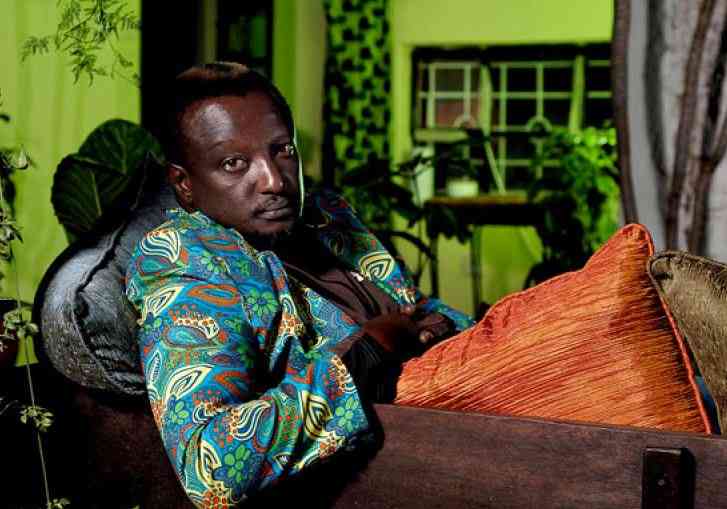
I recently attended an Exhibition at the Raw Spot Gallery in Grahamstown, South Africa. The show exhibited works by Ugandan artist and my good friend Eria Nsubuga, also known as Sane.
This work by Sane was an introspective series reflecting on a book written in 1911 entitled The Baganda: An account of their native customs and beliefs. The book was written in 1911 by John Roscoe, a British missionary to what was then the Uganda Protectorate, a colony of the British Empire.
Sane, being a Baganda himself, made a series of drawings and illustrations of his musings, reflections and criticisms of this book, and the works were extremely attractive and visually stimulating.
In my conversations with Sane, it seems that part of what inspired him to make these works was to speak back against the ill-informed assumptions held about the Baganda and Africans by foreign observers from the West.
The other inspiration are the stereotypes of Africans presented by these observers throughout the colonial era in Western mass media and popular culture at large. Indeed, many of these stereotypes still persist today.
As I was walking through this exhibition admiring Sane's works, I bumped into a German friend and his colleague. My friends' colleague asked me where I was from, and I replied Kenya. The fellow immediately asked me what tribe I belonged to, stating that 'everything is about tribes in Kenya'. I bristled with annoyance at this statement. Sane had travelled all the way to South Africa to exhibit a series of works about the Buganda people, their customs, and their way of life, to an audience who had absolutely no clue who the Baganda were or where they lived.
But his point of reference was not contemporary Buganda people or Baganda culture as it exists in 2022, but a book written by a British missionary 100 years ago. Indeed, his illustrations and drawings that were exhibited depicted the Baganda as they existed hundreds of years ago, and as they were described in Roscoe's book.
The majority of contemporary Baganda today, however, do not wear Kanzu's, except maybe on formal occasions. Nor do they live in the thatched roofed huts as described by Roscoe in 1911. Nor do they believe in the same faith practised by Buganda people in pre-colonial times, as most Baganda are now Christian. And yet, the majority South African audience at the Raw Spot Gallery was fascinated by Sane's depiction of Buganda, and many believed that this is how they live to this day.
Similarly, so much of Kenyan art is informed by these stereotypes of Africa or Western fantasies about African life. The late great creative writer Binyavanga Wainaina directly challenged this when he wrote his powerful piece How to write about Africa, which called out the continual use of racist colonial tropes and stereotypes of Africans in contemporary literature and in the arts. Sadly, few seemed to have taken Wainaina seriously, and when we look at some of Kenya's most internationally successful visual artists, we see that what makes them internationally acclaimed is that their personas conform to African stereotypes of poverty and alterity to the rest of the world.
Part of the intrigue that informed Cyrus Kabiru's early popularity in the Western world and in South Africa was his own positionality. Westerners were eager to offer their support and buy glasses made by a poor boy from Kibera slums, who managed to turn his surrounding squalor into art. Similarly, Kenyan artist, filmmaker and activist Jimi Chuchu is popular and acclaimed in the Western world because much of his work seeks to 'imagine a pre-Christian, pre-Islamic Kenya that is, he said during a recent visit to Seattle, far removed from the experience of his own generation' as written by American journalist Michael Upchurch.
When interviewed by Upchurch in 2015, Chuchu stated that "When foreigners come and take photos of African whatever, there's always this kind of mysticism that's hinted at in the books. But it's very alien to us - which sounds odd, obviously, because as Africans you'd imagine that we are very much in touch with that mysticism that foreigners find in our country. So I had an interest in that kind of spirituality".
 The Standard Group Plc is a multi-media organization with investments in media
platforms spanning newspaper print
operations, television, radio broadcasting, digital and online services. The
Standard Group is recognized as a
leading multi-media house in Kenya with a key influence in matters of national and
international interest.
The Standard Group Plc is a multi-media organization with investments in media
platforms spanning newspaper print
operations, television, radio broadcasting, digital and online services. The
Standard Group is recognized as a
leading multi-media house in Kenya with a key influence in matters of national and
international interest.



